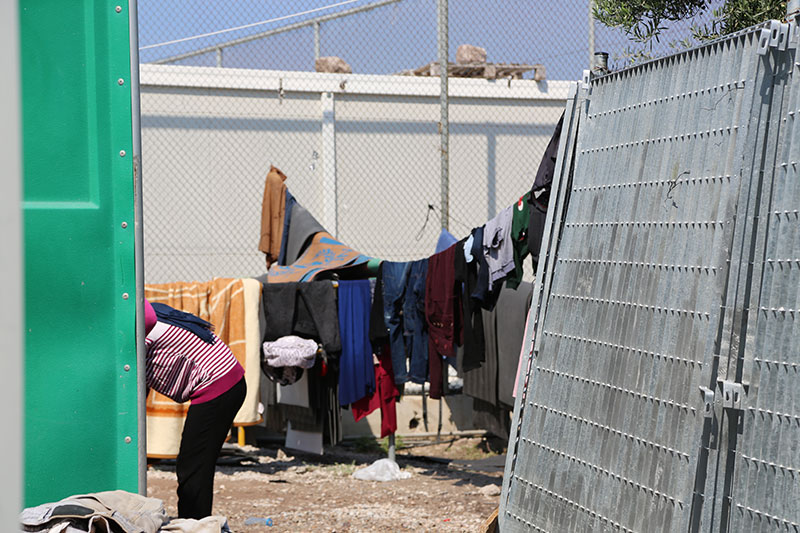I chose not to publish photos of the people with whom I’d had such close contact and who recounted their stories, often highly personal; this seemed like a necessary step to protect their privacy. Yet one story in particular touched me deeply, and I feel the need to share it here. It was the story of a young Afghani woman, herself a fashion designer! She fled Afghanistan because her parents had married her to a man thirty years her senior, to be his fifth wife. In love with a boy her own age, she fled to Iran, where she successfully completed a program in fashion design and went to work designing for film and television. When her family tracked her down, she was forced to go underground, as otherwise she would have been stoned to death for adultery.
It quickly became clear to me that of the individuals I met in the Moria camp, nearly none were still wearing their original clothing. Clothing had had to be swapped out at multiple stations along the route (from Afghanistan, Syria, North Africa… to Moria) . The refugees who were picked up at the time by Frontex or other NGOs and brought to Lesbos generally gave up their wet garments when first entering the camp, and were immediately provided with dry ones. To be more precise: with dry clothing that had been left behind by other refugees and which, having been washed, were now being provided to the new arrivals. A clever system that contributed to people perpetually slipping into a new clothing identity.
Irene Schüller, initiator of the project

